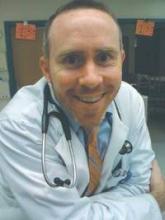Of the 3,363 physicians who have been certified by the American Board of Addiction Medicine (ABAM) in the subspecialty of addiction medicine, about 1% have listed pediatrics as their primary specialty. Given the potentially life-threatening substance abuse problems that we see in adolescents today, this is a troubling reality.
As pediatricians, we all understand the importance of disease prevention and early detection. We take comprehensive histories and perform exhaustive physical exams. We ensure that our patients are up to date on vaccinations, and provide anticipatory guidance about child development and safety. We offer an array of interventions to keep patients well and treat illness early.
Both biomedical research and epidemiology now show that we can significantly lessen the prevalence and impact of risky drug use and addiction in adults by focusing on prevention in youth. All physicians know that adolescence is a time of great vulnerability, but it is a particularly dangerous time for the disease of addiction. Equipping physicians with a skill set for recognition and educating them about treatment options are of vital importance to combating the epidemic of adolescent substance abuse.
Research in substance abuse has been extensive and has consistently shown that the adolescent brain is uniquely sensitive to the effects of nicotine, alcohol, and other drugs. Current studies shows that 90% or more of addicted adults began drug use between the ages of 12 and 21 years. It is clear that if drug use can be avoided in youth, the incidence of addiction and its consequences can be sharply reduced in the adult population.
With these facts in mind, the American Academy of Pediatrics Committee on Substance Abuse recommends that pediatricians be knowledgeable about the prevalence, patterns, cultural differences, and health consequences of substance use in their communities; incorporate substance use prevention into anticipatory guidance at office visits; be aware of the signs and symptoms of substance use and their association with other risky behaviors; and be able to screen for and evaluate the nature and extent of substance use among patients and their families. The AAP guidelines also recommend that pediatricians become knowledgeable about community services for evaluation, referral, and treatment of substance use disorders, and be available to provide aftercare for adolescent patients completing substance use treatment programs and assist in their reintegration into the community.
These are very well reasoned and laudable goals, yet how are pediatricians going to acquire the skills and knowledge to achieve them? Currently, relatively few physicians screen, intervene, or refer, because they have not been sufficiently educated about addiction medicine in medical school, nor trained in residencies. Until the establishment of ABAM, one barrier to this training was the lack of an addiction medicine subspecialty for primary care physicians. A subspecialty of addiction psychiatry exists within the field of psychiatry, although this does not provide the opportunity for addiction certification for physicians in other primary specialties. While there are excellent addiction psychiatry fellowships, there are no addiction medicine residencies for physicians pursuing primary care specialties among the 9,262 Accreditation Council for Graduate Medical Education (ACGME) accredited U.S. programs that are training 119,588 residents. The ABAM Foundation has worked to remedy this by certifying postresidency addiction medicine fellowship programs at leading medical schools across North America. The fellowships are based on the foundation’s national guidelines, Program Requirements for Graduate Medical Education in Addiction Medicine. These requirements are consistent with ACGME standards.
While addiction disorders account for a staggering amount of primary care visits in the United States, formal courses in addiction medicine are largely absent from most medical school curricula. I was fortunate during my own medical education at Tulane to volunteer at a local homeless shelter that served many patients with substance abuse problems. Following medical school, I completed an internship in internal medicine at Georgetown University Hospital, but I soon realized that my true love was pediatrics. I re-entered the residency match and completed my pediatrics residency at New York-Presbyterian Hospital/Weill Cornell Medical College.
Working with adolescents proved to be most enlightening and inspiring, and I felt myself drawn to the unique clinical crossroads of psychiatry, addiction, and pediatrics. I soon learned that there was a formal path for certification and for postgraduate training in addiction medicine. After finishing my residency, I completed a fellowship in addiction medicine at The Addiction Institute of New York at St. Luke’s and Roosevelt Hospitals (then affiliated with the Columbia University College of Physicians & Surgeons; now affiliated with Mount Sinai’s Icahn School of Medicine). Following fellowship, I took the ABAM certification exam and became ABAM board certified in addiction medicine. While it is not necessary to complete an addiction medicine fellowship in order to qualify for or pass the ABAM examination, I certainly feel that my fellowship was a worthwhile endeavor. After my fellowship, I was hired as associate director, and I am now director of the Addiction Institute’s fellowship program.


